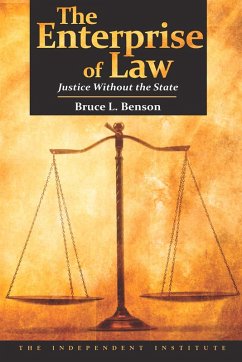
The Deadly Force Script (eBook, ePUB)
How the Police in America Defend the use of Excessive Force
Versandkostenfrei!
Sofort per Download lieferbar
43,95 €
inkl. MwSt.
Weitere Ausgaben:

PAYBACK Punkte
22 °P sammeln!
How many times have you read a news story about someone being shot by the police while reaching for their waistband? Or about an officer who testified at trial that the person he shot during a physical struggle had superhuman strength or a thousand-yard stare in his eyes? And how many times have you watched a police chief or sheriff during a press conference invoke the "21-foot rule" to justify their officer's killing of a mentally ill person with a knife?These and a host of other verbal devices are what author William Harmening calls the "deadly force script." It is a strategy that has been e...
How many times have you read a news story about someone being shot by the police while reaching for their waistband? Or about an officer who testified at trial that the person he shot during a physical struggle had superhuman strength or a thousand-yard stare in his eyes? And how many times have you watched a police chief or sheriff during a press conference invoke the "21-foot rule" to justify their officer's killing of a mentally ill person with a knife?
These and a host of other verbal devices are what author William Harmening calls the "deadly force script." It is a strategy that has been employed with great success by the law enforcement community in the decades following the landmark U.S. Supreme Court decision in Tennessee v. Garner (1985), the case that for the first time placed significant restrictions on a police officer's use of deadly force. It is a strategy that has gone relatively unnoticed by the general public, the media, elected prosecutors, and the judges and juries who must rule on the reasonableness of an officer's actions.
Now, perhaps for the very first time, William Harmening pulls back the veil to expose the deadly force script for all to see. He does this in a unique and informative way by presenting actual case studies where the script was employed following a deadly police encounter, typically right under the unsuspecting noses of local media and the prosecutor tasked with deciding whether to criminally charge the officers involved. Anyone with an interest in the twin ideals of an equitable system of justice and a professional and bias-free police force will find this book both fascinating and enlightening.
These and a host of other verbal devices are what author William Harmening calls the "deadly force script." It is a strategy that has been employed with great success by the law enforcement community in the decades following the landmark U.S. Supreme Court decision in Tennessee v. Garner (1985), the case that for the first time placed significant restrictions on a police officer's use of deadly force. It is a strategy that has gone relatively unnoticed by the general public, the media, elected prosecutors, and the judges and juries who must rule on the reasonableness of an officer's actions.
Now, perhaps for the very first time, William Harmening pulls back the veil to expose the deadly force script for all to see. He does this in a unique and informative way by presenting actual case studies where the script was employed following a deadly police encounter, typically right under the unsuspecting noses of local media and the prosecutor tasked with deciding whether to criminally charge the officers involved. Anyone with an interest in the twin ideals of an equitable system of justice and a professional and bias-free police force will find this book both fascinating and enlightening.
Dieser Download kann aus rechtlichen Gründen nur mit Rechnungsadresse in A, D ausgeliefert werden.













